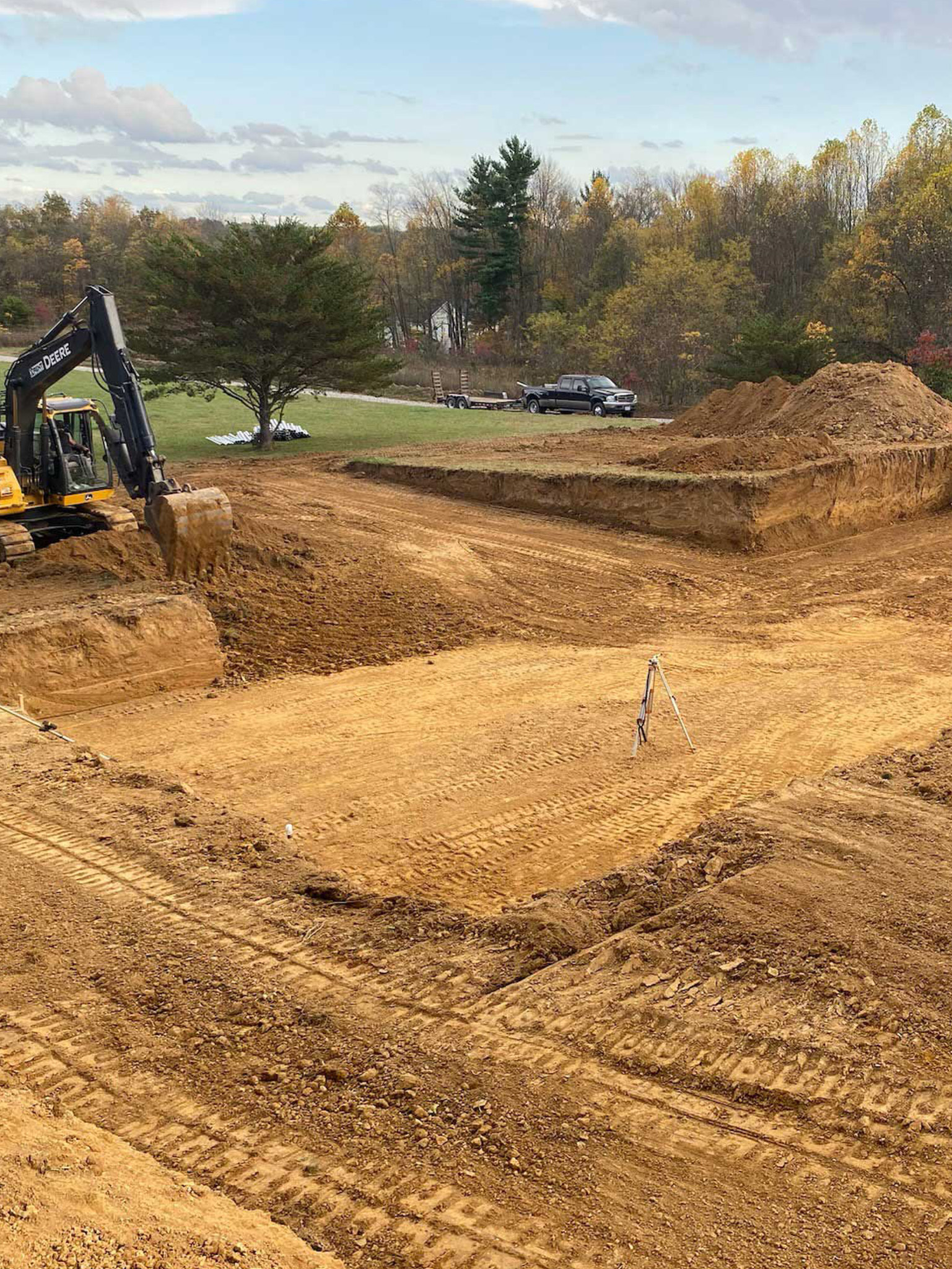Commercial Lancaster Trenching - Trenching Services for Businesses in Lancaster
Commercial Lancaster Trenching - Trenching Services for Businesses in Lancaster
Blog Article
Unveiling the Art of Excavation: Pro Tips for Safe and Efficient Digging
In the world of excavation, the mastery of secure and effective excavating is an art form that calls for adherence, understanding, and accuracy to well established practices. As soil is turned and planet is relocated, the complexities of excavation reveal themselves, demanding an eager understanding of devices, soil make-up, security procedures, and environmental factors to consider. The expertise required to navigate these elements successfully can suggest the distinction in between a successful excavation job and a potential disaster. By unwinding the layers of this elaborate procedure, a globe of insights and methods awaits those seeking to elevate their excavation skills to brand-new heights.
Relevance of Proper Devices
To guarantee the security and performance of any excavation job, making use of the suitable equipment is critical. Excavation jobs differ in scope and complexity, ranging from little domestic landscaping tasks to large-scale construction tasks.
Excavators are basic pieces of equipment in any excavating procedure. These versatile devices been available in different dimensions to match different task demands. Mini excavators are perfect for smaller sized tasks, while larger excavators deal with much more considerable projects successfully. Backhoes are an additional important equipment kind, incorporating the features of a loader and an excavator in one device. They are beneficial for jobs needing adaptability and ability to move.
Excavators succeed in jobs that need pressing huge amounts of soil or debris. By spending in the proper equipment, excavation projects can be finished securely, on time, and with precision.
Understanding Soil Make-up
A thorough understanding of dirt make-up is basic for executing excavation projects with precision and safety. Comprehending the different kinds of dirt is critical as it straight affects excavation approaches, equipment selection, and general job performance.
Sand particles are the largest and supply excellent drain however provide little cohesion. Silt particles are smaller than sand yet bigger than clay, using modest drainage and cohesion. Clay bits are the tiniest and offer high cohesion however poor drain. Raw material, such as decaying plant product, impacts soil fertility and security.
Prior to commencing excavation, conducting dirt examinations to determine its structure and features is important. This details aids in choosing the appropriate tools, executing safety actions, and establishing excavation approaches tailored to the details dirt conditions - septic ohio. By comprehending dirt composition, excavation experts can enhance task outcomes while making certain security and adherence to ideal methods
Precaution and Methods
Understanding dirt composition is the foundation whereupon safety and security actions and protocols for excavation tasks are constructed, making certain the wellness of employees and the success of the undertaking. When it pertains to safety and security during excavation, there are a number of essential actions that should be carried out to mitigate dangers and stop crashes.
Firstly, prior to any kind of excavating commences, a complete evaluation of the site ought to be carried out to identify any type of potential risks such as below ground energies, unsteady dirt problems, or nearby structures that could position a threat. It is critical to have his explanation a competent person supervise the excavation process to guarantee that all security procedures are adhered to purely.
In addition, all workers included in the excavation has to be effectively educated in risk-free excavating techniques and the proper procedure of equipment. By sticking to these safety procedures and protocols, excavation tasks can be finished successfully and without case.
Effective Excavation Preparation
When beginning on an excavation my blog task, careful preparation is vital to make certain performance, security, and successful results. Efficient excavation planning involves numerous essential steps that are crucial for the smooth implementation of the project.
Once the site analysis is full, the next step is to create a clear timeline and routine for the excavation activities. This consists of establishing the sequence of jobs, equipment needs, and manpower allocation. Appropriate organizing helps stay clear of hold-ups and makes certain that the project remains on track.

In addition, interaction among all group participants is critical during the planning phase. Clear regulations, routine updates, and efficient control are crucial for an effective excavation project. By spending effort and time in meticulous preparation, excavation groups can dramatically boost performance, decrease dangers, and attain successful outcomes.

Managing Ecological Considerations
With increasing focus on environmental sustainability in building and construction practices, taking care of ecological considerations has actually ended up being an important aspect of excavation tasks. Excavation activities have the prospective to impact the surrounding setting through dirt disintegration, sediment drainage, habitat disturbance, and contamination of water sources. To mitigate these dangers, it is vital to apply finest techniques that prioritize environmental management.

Moreover, proper waste administration is critical to avoid soil and water contamination. Executing procedures for the disposal of unsafe products, recycling of waste materials, and lessening making use of damaging chemicals can substantially lower the ecological effect of excavation tasks. By incorporating these methods into excavation planning and implementation, building firms can guarantee that their projects are not just secure and productive but also eco accountable.
Final Thought
Finally, grasping the art of excavation requires a thorough understanding of correct devices, soil composition, safety and security procedures, and efficient planning. By adhering to these guidelines and considering ecological elements, excavations can be carried out safely and effectively. It is essential to focus on security and productivity in every excavating project to make certain effective outcomes.
As dirt is turned and planet is relocated, the intricacies of excavation expose themselves, demanding an eager understanding of devices, dirt structure, safety protocols, and environmental factors to consider.To ensure the security and effectiveness of any excavation job, utilizing the proper equipment is vital.A thorough grasp of soil structure is fundamental for performing excavation jobs with accuracy and safety and security. Understanding the various types of soil is crucial as it straight impacts excavation techniques, tools selection, and general task efficiency. By recognizing soil structure, excavation specialists can enhance job results while ensuring security and adherence to ideal methods.
Report this page